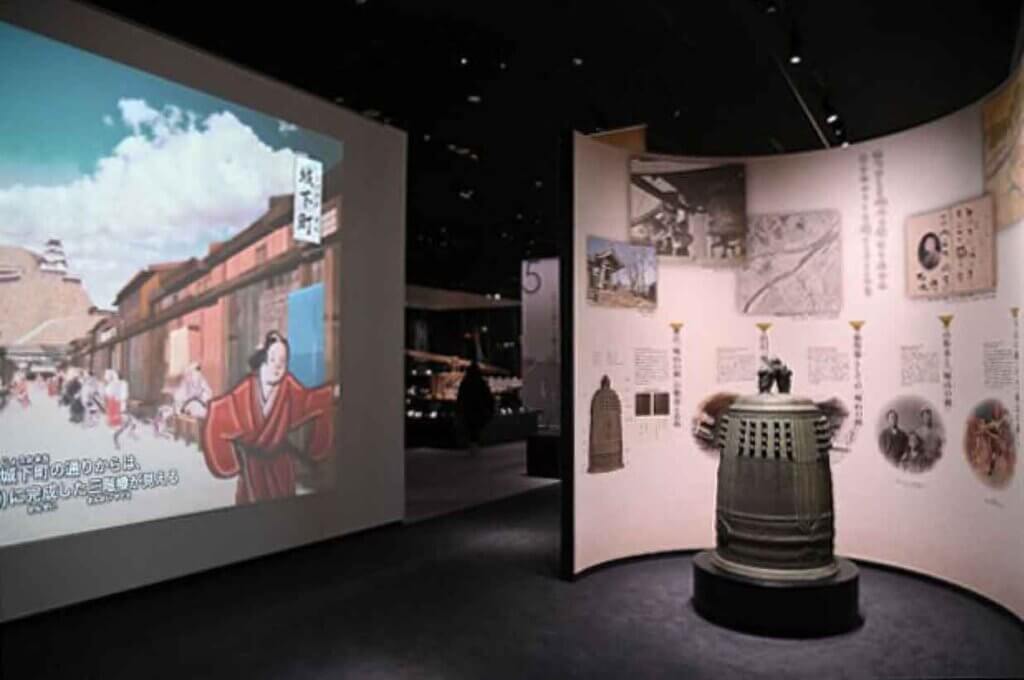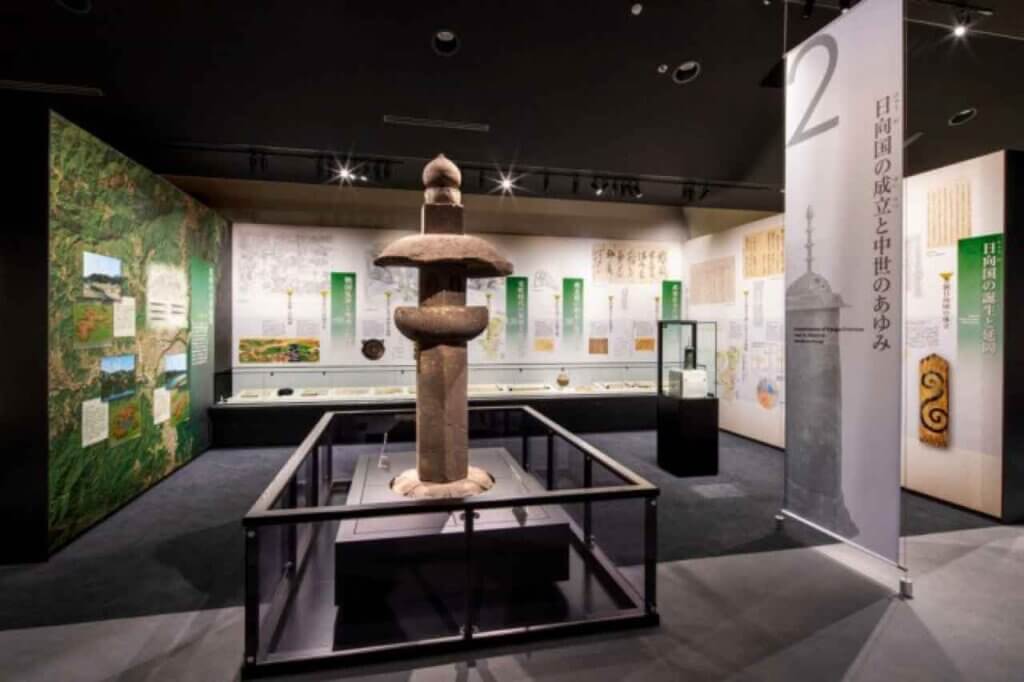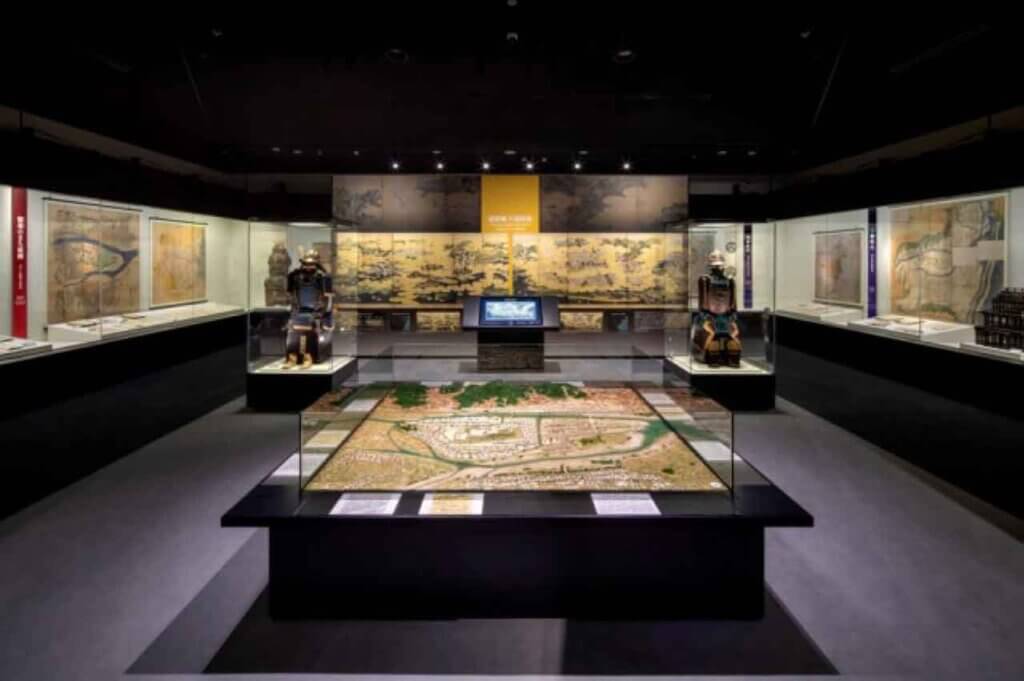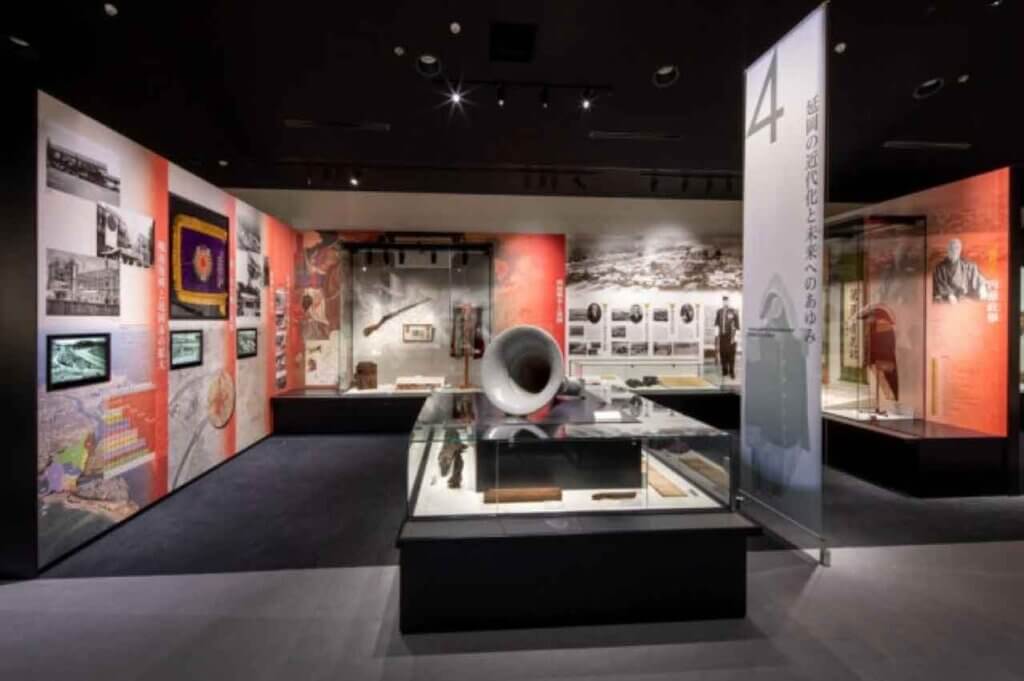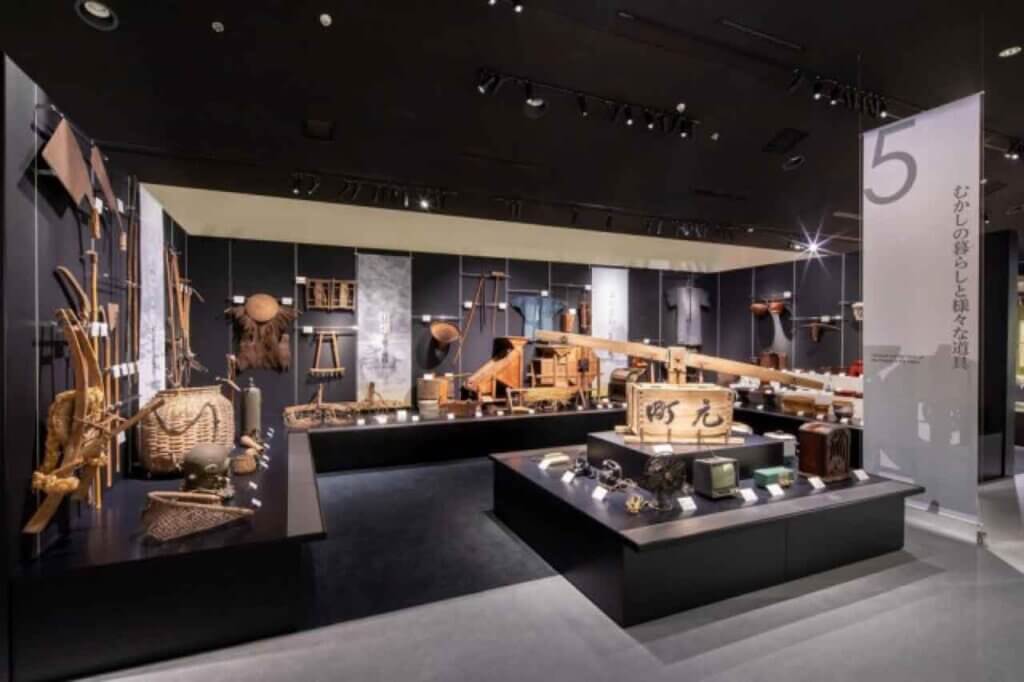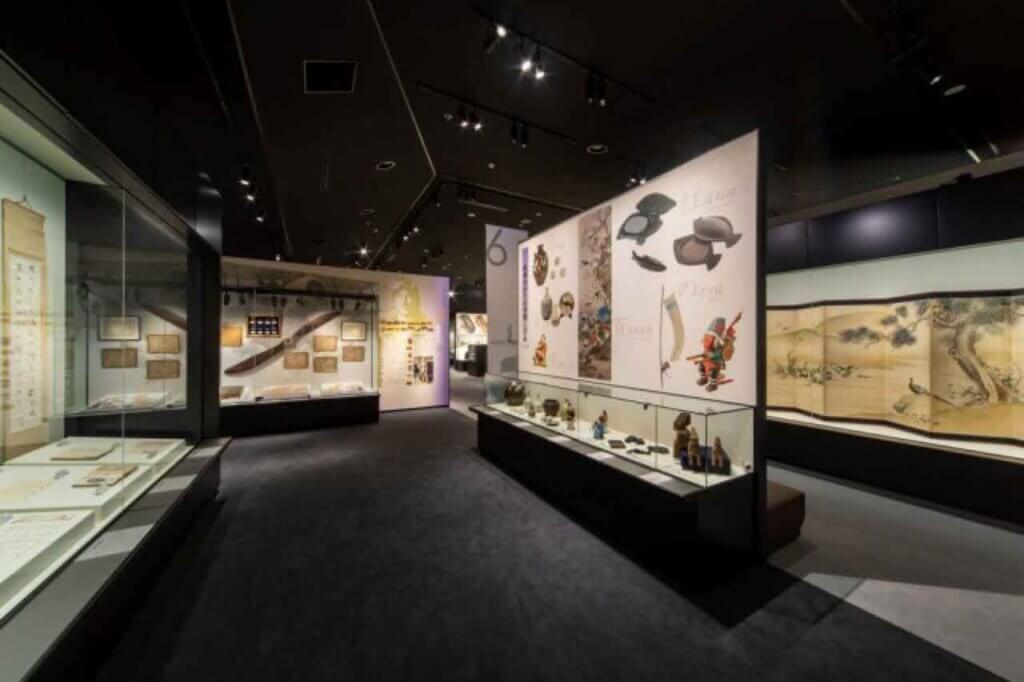Learning and inheriting Nobeoka's history,
and create the future

The Nobeoka Castle and Naito Memorial Museum was opened in September 2022 under the concept of ‘a center for learning and inheriting Nobeoka’s history and creating its future’. The museum collects and preserves materials related to the history and culture of Nobeoka. It also aims to provide opportunities to appreciate historical materials and works of art, and to inherit them on to the future.
The museum is located on the site of the Nishinomaru of Nobeoka Castle, where the residences of successive lords of the castle were located.
The castle lord’s residence was demolished by following the abolition of feudal Japan, but when the last lord, Naito Masanori, returned to Nobeoka, a new residence was built in 1892. The Naito family donated the house to Nobeoka City in 1939 and it was opened to the public as the Naito Memorial Museum, but was destroyed by fire in an air raid in 1945.
However, it was rebuilt in 1963 and has been widely enjoyed by public as the new ‘Naito Memorial Hall’ with a conference room that can be used as a wedding venue, an auditorium and an exhibition room for local materials.

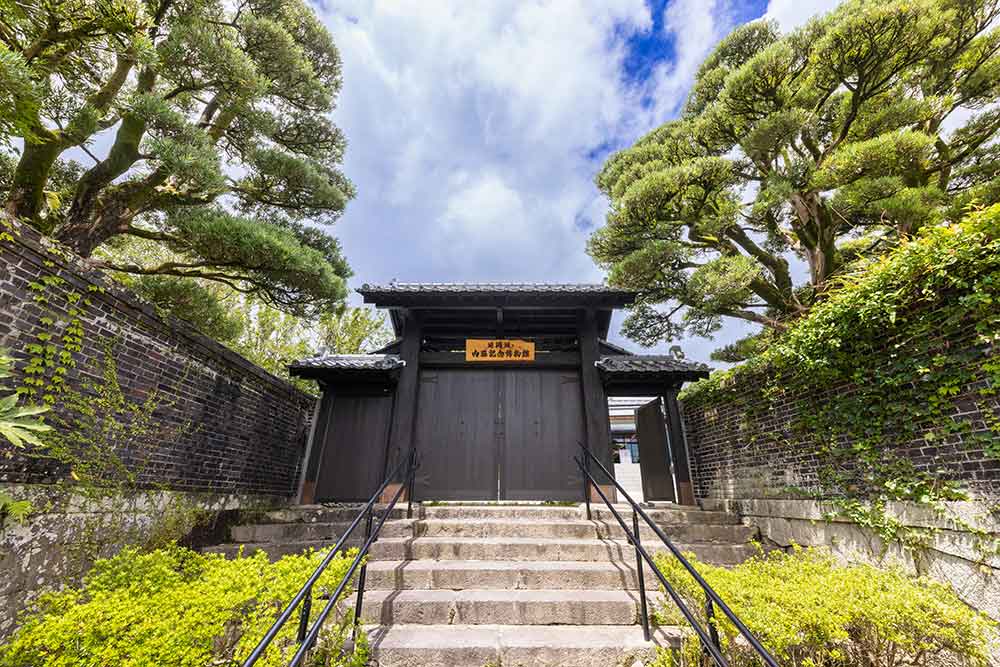
In 1992, the building was renovated and transformed into a facility with expanded museum functions. In 2022, the museum was renamed the Nobeoka Castle and Naito Memorial Museum and began a new chapter in its history.
Admission to the museum is free, so please feel free to visit. We look forward to welcoming you.
The usual showroom
Episodes surrounding the bell ‘Shiroyama no kane’ (Bell of Shiroyama)
This area is the prologue to the regular exhibition room, displaying the first ‘Shiroyama Bell’, a Miyazaki Prefecture-designated tangible cultural property, which Bokusui Wakayama wrote about in his poem.
Images of Nobeoka Castle and the castle town reproduced by computer graphics, as well as the present-day Castle Park filmed by a drone, are projected on the walls, visitors can experience the history of the castle town of Nobeoka, which was watched over by the first ‘Bell of Sihroyama (the first reference to the term ‘Nobeoka’), by watching it.
The story of ancient Nobeoka told by ruins.
Boat-shaped sarcophagus excavated from ancient tomb No. 4 of the ‘Nobeoka ancient tomb’ (Located at Onokonomachi) and model of a stone chamber section from Tomb No. 24 of the Minakata ancient tomb Group (which is designated as a national historic site located at Onuki-cho) have exibit in this area as a landmark.
The exhibition introduces the state of Nobeoka and the people who adapted to their environment, in 30,000 years ago, from Palaeolithic Age to the Kofun Period, by showing the distribution of ruins identified in the city and the display of relics such as stone tools, pottery and iron tools.
Establishment of Hyuga Province and medieval history
This is a space where the stone Rokujizo banner, a tangible cultural property designated by Miyazaki Prefecture and built in the town of Maino in 1557, and the Stackable sutra cylinder made in the first half of the 12th century and found in Misu are displayed as landmark. The exhibition introduces the situation in Nobeoka from the Nara Period (710-794) to the Heian, Kamakura, Nanbokucho, Muromachi and Sengoku Periods (1336-1573), through exhibits such as replicas of national treasures and cultural properties of national importance.
The reign of successive domain lords and people's lives
This is main exhibition area that includes ‘Konitoodoshinimaidougusoku’, which is said to have been used by Naito Yoshihide, who known as a close friend and patron of Matsuo Basho, and a ‘asagiitosugakeodosinimaigusoku’, which is a style of so-called Namban gusoku, handed down in the Naito family, a diorama reproducing scenes from the Nobeoka Castle area when the Arima clan was lord of Nobeoka, based on the ‘ArimakachuNobeokajoyashikitsukiezu’, owned by the Meiji University Museum, and a wall with a full-scale graphic of the Nobeoka Castle Landscape, a painting of the landscape from Nobeoka City to Hyuga City around 1681, when the Arima clan was lord of Nobeoka, owned by the Kiyotaka Museum of Art, which is a Miyazaki Prefecture-designated tangible cultural property.
The exhibition also features how the lords changed rapidly, from the Takahashi, Arima, Miura, Makino and Naito clans, and how the domain was ruled in each period, as well as Noh masks branded with ‘Tenkaichi’, which are thought to have been passed down through successive generations of clan leaders.
Nobeoka's modernisation and progress towards the future
This space introduces the modern and contemporary history of Nobeoka, displaying siren as a landmark placed on the east side of the Kanezukido in Shiroyama, which was used as an air raid warning during World War II.
The educational projects undertaken by the last lord Masataka Naito after his return to Nobeoka in 1890, various industrial promotion projects such as copper mine management, the relationship between Nobeoka and the Civil War, including the Battle of Wadagoe and the proclamation of the Satsuma Army’s dissolution, as well as the birth of Nobeoka City through World War II introduces the changes in Nobeoka City from its birth through World War II to the present day through a large number of actual documents and photographs.
Life in the past and various toolsな道具
This is a space for introducing folk materials and exhibits a hand-powered pump used to extinguish fires, called a ryudosui, which was produced in 1869 in Gions-cho which used to call Motomachi, as landmark. Tools of daily life, farming tools, mountain logging tools, fishing tools and nostalgic electrical appliances are introduced here, grouped according to where they were used. For example, tools used inside the house, tools used around the house, tools used in the fields, and tools used in the mountains, rivers and the sea.
Great people and arts and crafts associated with Nobeoka
This section introduces the aircraft pilot Yukichi Goto, who achieved many firsts in Japan; the poet Bokusui Wakayama, who took the name Bokusui when he was a student at Nobeoka Junior High School, which is now Nobeoka High School; and Masamichi Masamichi Naito, the 17th head of the Naito family, who contributed greatly to the development of the city by donating a number of cultural assets that had been handed down in the Naito family, with saying ‘valuable historical documents should not be the exclusive property of one private person and should be preserved and stored in the most suitable area’. Also, this space exhibits paintings by Okabe Nanpo (an artists from Nobeoka), as well as arts and crafts such as Noborizaru, Benxi stone inkstone, Komine ware and Maruyamayaki ware.
